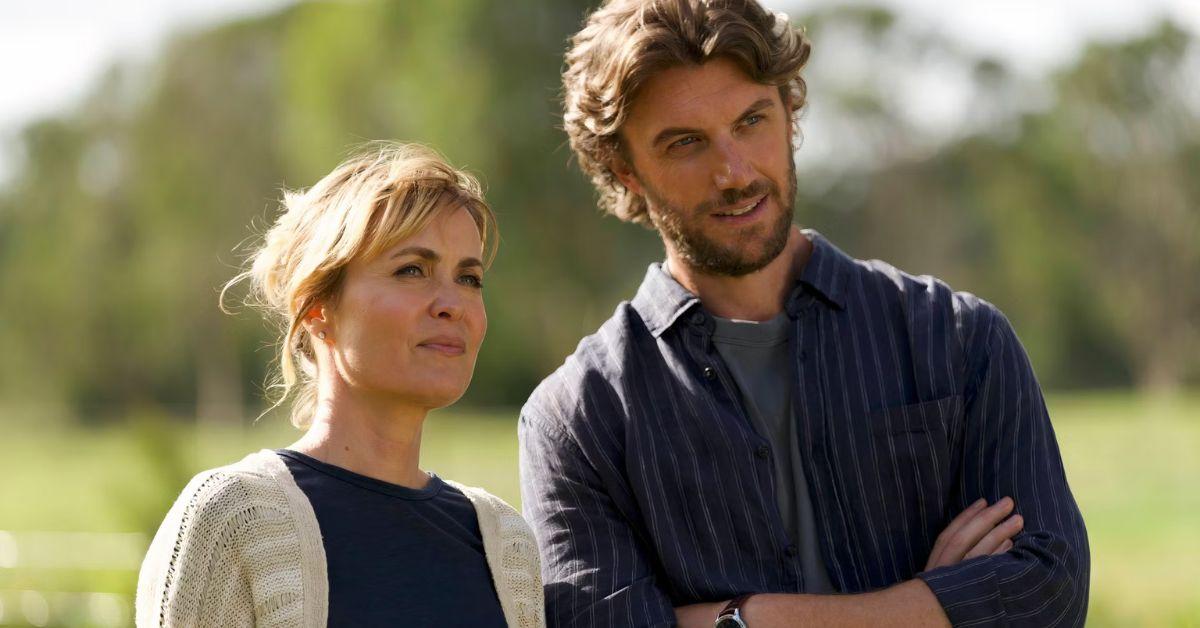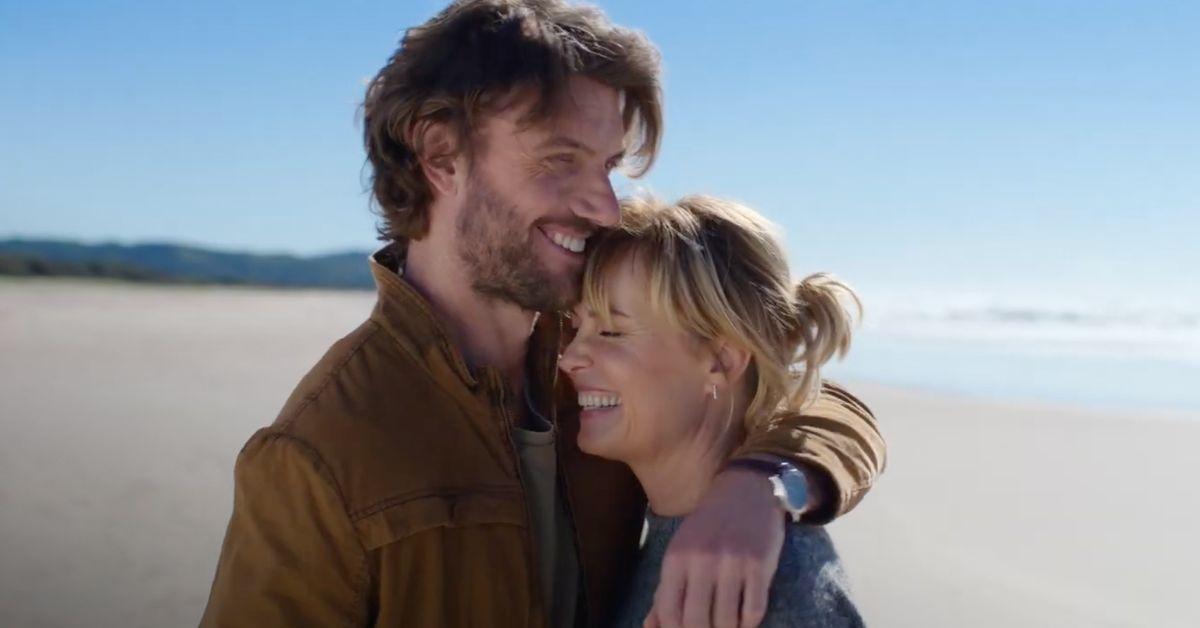By: Russ Matthews
Multiple sclerosis affects thousands of people worldwide, and no cure has been discovered for this disease.
Claire Jansz and her husband, John Raftopoulos, tell their true story of love and how they continue to hope for a cure in the future, in Take My Hand – an enduring tale of rekindled romance impacted by this physically disabling condition.
Radha Mitchell (Blueback) takes on the foreboding task of portraying the lead role as Laura in this decades-long romance that spans two continents. She grew up in Byron Bay (Australia). The young horse enthusiast fell in love with a young man named Michael (Xavier Molyneux, Adam Demos), who worked at his father’s shop in town. Yet, when she got the opportunity to attend University in England, the two went their separate ways. After graduating, establishing herself in investment banking, getting married and having three children, Laura is diagnosed with multiple sclerosis. As the disease turns her life and relationships upside down, she yearns to return to Australia to be with her family. Then, after a tragedy in their family that leaves her as a widow, the grieving mother eventually returns to her home. Upon arriving with her boys, she manages to reconnect with her long-lost love from decades ago. They must determine if they should rekindle their love for one another.
Clare and John’s passion project turns a standard romantic drama into a heartfelt story of inspiration, hope, and love. As it showcases Australia’s beauty and this personal story of perseverance in the eyes of tragedy, this film is as aesthetically pleasing as it is moving. Both sets of actors portray Laura and Michael’s journey to love with convincing form, making these feelings believable over the decades. As a first-time director and writer, John has some teething issues to work through in his application of timelines and in determining how much needs to be invested in each act. Still, these narrative weaknesses do not undermine the overall screenplay.
The driving purpose behind this love story is to educate the public on the urgency of finding a cure for multiple sclerosis—a noble initiative and one worth supporting. Yet, the overall experience focusses more on the romantic side of this couple’s relationship. Instead of being a commercial for the need for a countermeasure for this disease, this love story will heighten people’s awareness of illness. Take My Hand will capture and entertain audiences’ hearts while moving them to do more for MS patients.

REEL DIALOGUE: What’s the cure for this broken world?
And he who was seated on the throne said, “Behold, I am making all things new.” Also he said, “Write this down, for these words are trustworthy and true.” – Revelation 21:5
Interestingly, God doesn’t get a mention in Take My Hand. God is usually considered in many other films that discuss diseases and this broken world. Either to be blamed for the problem or for a potential solution. Yet, despite his absence in this narrative, many may still ask the question of whether the imperfections of the world are caused by God or why He doesn’t just fix them.
Studying the Bible reveals that the God of the universe does not make mistakes. The issues of this fallen world can be linked back to mankind’s sinful choices. Human disease and disabilities are part of this fallen world, and God is not to blame, but he can provide the answers. The future that he offers in Revelation 21:5 removes the curse of sin, and he will make all things new.
To be more direct, these monumental questions can be answered in the person of Jesus. Not that it is a simple answer, but not until you look into his life and death will the answer be evident. Pick up one of the accounts of his life and see how God answers this multi-layered query with one man.
Article supplied with thanks to City Bible Forum.
All images: Movie publicity
About the author: Russ Matthews is a film critic at City Bible Forum and Reel Dialogue. He has a passion for film and sparking spiritual conversations.

